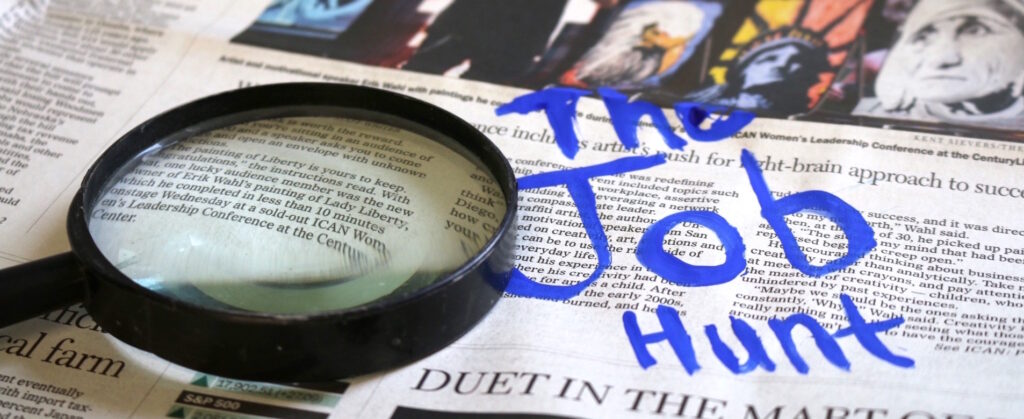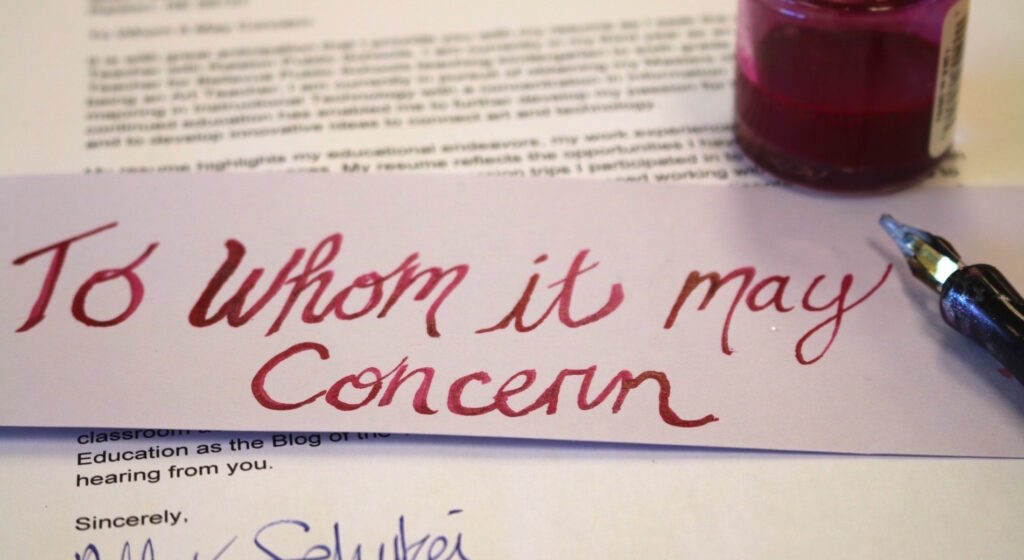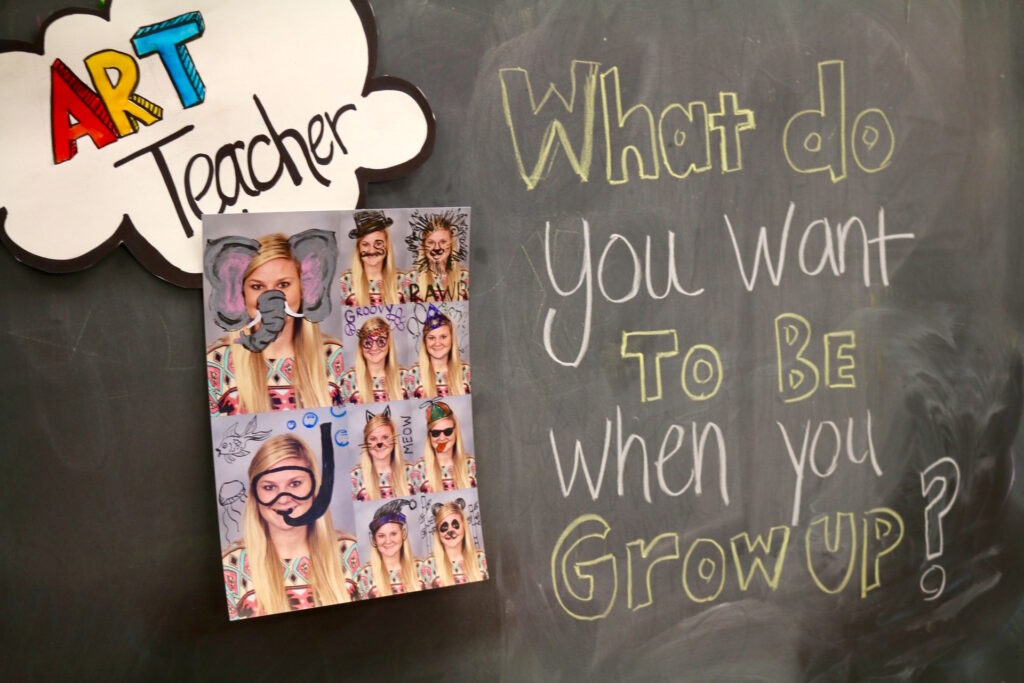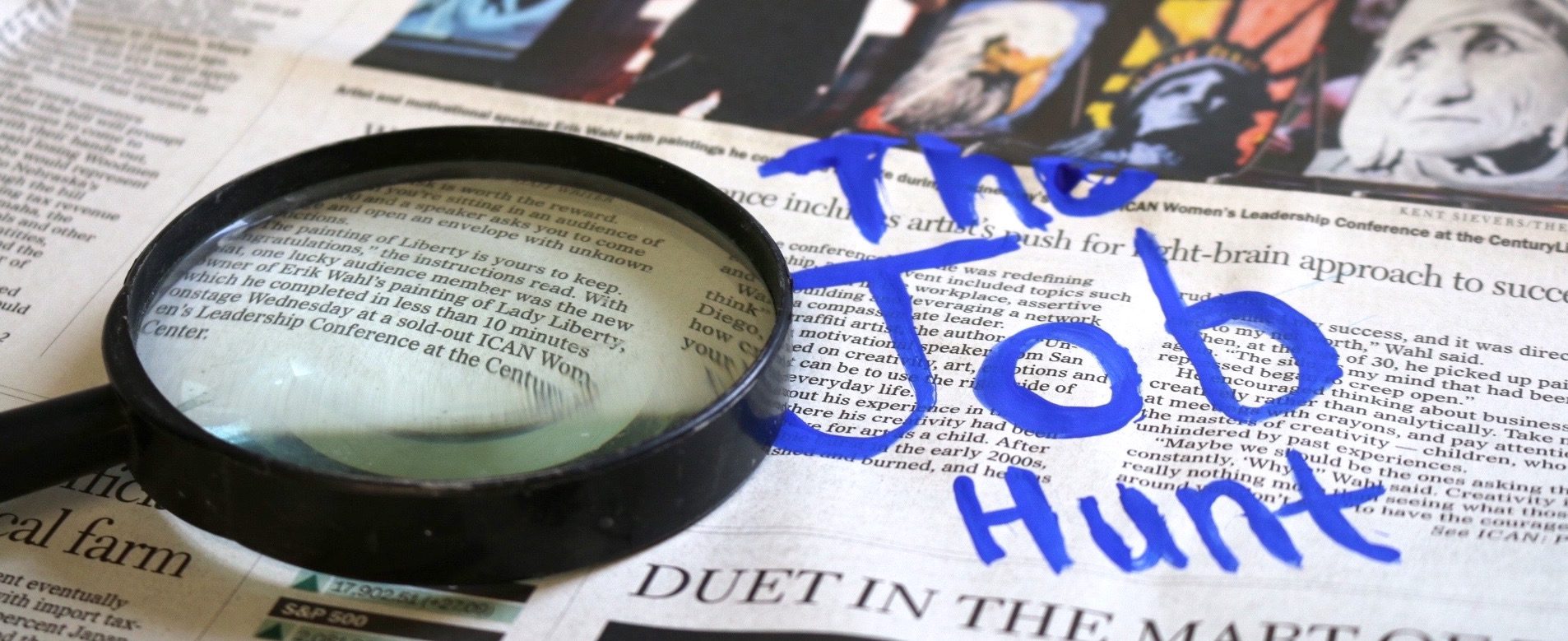In the education field, there’s no such thing as the “slow season.” In fact, I’d argue that we are coming to our busiest time of year. With art shows, projects to finish, and preparing our students to move on, downtime does not exist. It is not only busy on the student/teacher end but also on the administration side as letters of intent and contract renewals are distributed and processed.
We’ve officially hit the season of job hunting. Whether you are looking for your first teaching job or searching for a position change, this article is for you.
Today I am going to share tips about the 4 stages of the job searching process.

1. Where to Look for the Job
Sometimes the most difficult part of starting a job search is knowing where to look. If you know you are interested in a particular school district, check the district website. Districts are updating their websites daily. If you check in the morning and there are not any new listings, look back later in the day as most seem to be updated in the afternoon.
If you don’t have a particular school district in mind but are looking at a particular state, check with the state’s department of education. Often they have a statewide database that lists openings. Another great resource, if you don’t have a particular location in mind, is K12 Jobspot. Here you will find job listings from over 3,000 school districts around the country. Also, don’t forget about the Sunday edition of your local newspaper where job postings can run across 5 to 6 pages!
2. The Application
Luckily, with the use of online resources, the application process has never been easier! Many school districts use hiring sites like TalentEd or AppliTrack where nearly everything can be done online. If you are applying for multiple jobs with one of these systems in place your information will travel with you, making the process much less time consuming. Make sure you have all pertinent documents scanned and ready to attach. This will include your resume, cover letter, at least 3 letters of reference, and transcripts. Be prepared, smaller districts might ask you to do it the old fashioned way, so it’s never a bad idea to have a few hard copies ready to go.

3. The Interview
No two interview processes look alike. In my first 3 years of teaching, I went on 10 interviews, and each one was a different experience entirely. I’ve had interviews lasting as few as 30 minutes and others lasting as long as 3 hours. So, how do you prepare?
The answer is to over prepare. Not knowing what questions you will be asked can be intimidating. Some interviews focus mainly on getting to know you as an educator, looking at your philosophy and practice, while others might look to get to know you personally. Prepare for both types of questions, and you’ll be in good shape.
Another overwhelming part of the interview process is determining what to bring. I generally bring 3 things: a water bottle, an iPad, and a teaching portfolio binder. If you have an online portfolio or blog that showcases what you do in your classroom, share it! Chances are you’ve already provided links in your application materials, but it never hurts to pull up your work if the opportunity presents itself.
As we can’t always control technology, bring along a hard copy you can share as well. Your interviewers don’t have time to flip through each page, so include only essential documents (a few photos of student work, a lesson plan, and an assessment example). If your interviewers aren’t art teachers, it’s easier to show what you know rather than talk about it. Be ready to impress with your examples.
Don’t forget to send a post-interview ‘thank you’. If time is of the essence and a handwritten note won’t make it in time, send an email, this will certainly make an impression.
4. What if I don’t get the job?

Unfortunately, every interview doesn’t result in a job offer. Sometimes after an interview, I’d walk away knowing it was not the right fit for me, and I was relieved I didn’t get the position. But where do you go from there?
While it can be discouraging not to land the job, sometimes it is a reality. Remember, I went on 10 interviews in 3 years (not including the 50+ jobs I have applied for)! To add some perspective, the position I currently hold had approximately 40 applicants and only interviewed 3 candidates. At the same time, a Science position opening had only 7 applicants! It’s a competitive market for art teachers, but keep in mind, if you’re getting an interview you are a top candidate.
It’s essential to be patient. You may be an outstanding art teacher with the credentials to prove it, but much more goes into finding the right applicant. Such factors as how you’ll fit into the building climate are taken into consideration.
It’s easy to feel discouraged, but don’t give up. There were times I’d walk away from an interview thinking I nailed it, but I still wouldn’t land the job. As uncomfortable as it might seem if you don’t know why you didn’t get the job, simply ask. After one particular interview, upon hearing the news that I did not get the position, I called the building principal and asked why. It was not a phone call out of bitterness, but an honest conversation to know how I could improve for the next one.
Landing a job isn’t easy. With a little patience and perseverance, the end result will eventually go your way. Don’t give up–the right job is waiting for you!
What is the best advice you’ve received while searching for jobs?
How do you approach the job searching process?
Magazine articles and podcasts are opinions of professional education contributors and do not necessarily represent the position of the Art of Education University (AOEU) or its academic offerings. Contributors use terms in the way they are most often talked about in the scope of their educational experiences.





